PROTECT YOUR BUSINESS INTERESTS
Business continuity planning is a tool for handling the transfer of a business to a different owner when the original owner leaves, dies, or becomes incapacitated. A continuity plan protects short-term and long-term business interests and is one of the most important components of business exit planning.
WHAT HAPPENS WITH THE DEATH OF AN OWNER?
The death of an owner often sets off a ripple of events for the business if it is not prepared for continuity. This loss of direction can lead to losses of financial resources, vendors, key talent, and loyal customers. Below are the key issues that can occur when owners do not create a plan, along with ways to mitigate them
Loss of Financial Resources
Vendors may decide to discontinue their services to the business, especially if the business defaults on its contracts. The banks, lessors, bonding, and financial institutions you do business with may also end their relationship with your company. How to handle these situations depends on the type of ownership:
- Sole owners – Your death can put enormous pressure on the business to continue its performance should third parties refuse to lend money or make guarantees based on your company’s health. Continuity planning can help offset the loss of leadership.
- Partnerships – The loss of financial resources can be mitigated by funding a buy-sell agreement, which places a significant amount of money in the company reserves should you die.
Loss of Key Talent
Another issue that can create problems with business continuity is the loss of your key talent. If the remaining owners do not have your experience or skills, the business can suffer as if it had been sole ownership. Your experience, skills, and relationships with customers, vendors, and employees may be difficult to replace, especially in the short term. To overcome this situation, begin grooming and training successive management capable of filling your shoes. You should also begin preparing for the transition early since training your replacement can take years.
Loss of Employees and Customers
Particularly with sole ownership, as vendors end their relationship with the business, employees will be unable to satisfy their obligations to customers. This can hasten their departure, taking key skills and even client relationships with them. To mitigate the loss of key employees, you can incentivize them to continue their employment through a written Stay Bonus that provides bonuses over a period of time, generally 12-18 months. This bonus is designed to substantially increase their compensation, usually by 50 to 100 percent for the duration specified. Typically, this type of bonus is funded using life insurance in an amount that is sufficient to pay the bonuses over the desired timeframe.
CONTINUITY PLANNING KEEPS THE BUSINESS RUNNING
For businesses with only one owner, it should be obvious that there will be no continuity of the business unless a sole owner takes the appropriate steps to create a future owner. Whether it be grooming a successor or creating group ownership, this step is one that should be addressed early. Even if your business is owned by your estate or a trust, the following steps should help business owners move through the process of creating a business continuity plan
- Meet with your banker to discuss the continuity plans you have made. Showing them that the necessary funding is in place to implement your continuity plans will help the eventual transfer of ownership to proceed smoothly
- Work closely with a competent insurance professional to ensure the amount of insurance purchased by the owner, the owner’s trust, or the business can cover the business continuity needs outlined in your plan
- Create a written Succession of Management plan that expresses your wishes regarding what should be done with your business over a period of time until your eventual departure
- Ensure your plan specifically states how the business transfer should be handled, whether continued, liquidated, or sold
- Name the person or persons who will take over the responsibility of operating your business
- Notify heirs of the resources available to handle the company’s sale, continuation, or liquidation
Deciding when to begin business continuity planning is complicated and likely depends on your health, family circumstances, and overall business financial wellness. We suggest you seek the advice of a business planning professional to help you sort through your options.
BUSINESS CONTINUATION PLANNING GLOSSARY
Annual gift tax exclusion
The annual gift tax exclusion allows you to give away assets up to a certain value without paying gift taxes. For 2018, the exclusion amount is $15,000 for individuals and $30,000 for couples, and you can gift up to that amount to an unlimited number of people. The exclusion is not cumulative; only the current year’s exclusion amount is available when a tax year has passed. Taking advantage of the gift tax exclusion every year allows you to transfer your business incrementally without triggering gift taxes.
Bonus equal to premium
Raising the necessary capital can be a challenge for employees involved in buy-sell agreements. If paying the premiums for an insured buy-sell agreement would be a strain for the employee, you may wish to consider increasing the employee’s compensation by the amount of the premium.
Buy-sell agreement
A buy-sell agreement is an arrangement between you and a prospective buyer of your business. An important step in business succession planning, it gives your family a guaranteed buyer for your business interest at an agreed-upon purchase price. This written document outlines the terms if an owner should die, become disabled, retire, or otherwise leave the business. When a life insurance policy funds the agreement, it can provide an immediate income tax-free pool of funds at an owner’s death. In addition, selecting permanent life insurance coverage that accumulates cash value accrues funds that can be accessed for living buyout benefits on a tax-favored basis.
Charitable lead annuity trust (CLAT)
With a CLAT, you can pass business assets to donors at a reduced transfer tax while making a significant gift to charity. The charity receives an income stream until the trust’s term ends, at which time the trust assets are distributed to the beneficiaries. Because the charity receives an annual payment from the trust, the donor will face reduced gift and estate taxes.
Charitable remainder trust (CRT)
A CRT is an irrevocable trust that allows you to create retirement income for yourself or dependents while diversifying your portfolio. A donor transfers his or her business interest into a CRT and receives an income tax deduction for the gift. The trustee sells the stock who then reinvests the proceeds in a diversified portfolio without generating immediate income taxes. The trustee pays a percentage of the trust assets to the donor (and/or family members) for life or some other predetermined period. At the end of this period, whatever is left in the trust is distributed to the designated charity.
Cross-purchase agreement
With this type of buy-sell agreement, each partner in the business agrees to buy the others’ business interests in the event of death, disability, or retirement. The strategy’s main advantage for C corporations is that the purchasing owners receive a step-up in basis when they buy the shares of an outgoing or deceased owner, helping to reduce future taxable gains.
Cross-owned policy
A cross-owned insurance policy can fund a cross-purchase agreement. Each partner in the business takes out a life insurance policy on the lives of the other partners. The beneficiary of the policy is always the purchasing partner.
Employee stock ownership plan (ESOP)
A tax-qualified retirement plan that is invested solely in employer stock, an ESOP can provide a buyer with a departing owner’s interest in the business.
Entity-purchase agreement
An entity-purchase agreement, also known as a stock redemption agreement, is a common type of buy-sell agreement. With this kind of plan, the business entity itself enters into an agreement with the business owner to purchase his or her interest in the event of death, retirement, or disability. This strategy offers administrative efficiency when there are four or more business partners. It is not commonly used in family-owned businesses because of the complications associated with IRC Section 302 and family attribution rules.
Estate equalization
Estate equalization comes into play when a business owner has several children with different levels of involvement in the business. Through the use of life insurance, children not involved in the business receive an equivalent inheritance instead of a share in the business.
Grantor-retained annuity trust (GRAT)
A GRAT is an irrevocable trust funded with a one-time transfer of property, such as a business interest. The grantor receives income payments from the trust throughout the term of the trust. At the end of the term, all assets remaining in the trust pass to the designated beneficiaries (usually the grantor’s children). Because the grantor receives an annual payment from the trust, gift taxes are reduced for the business owner.
Irrevocable life insurance trust (ILIT)
An ILIT is a trust that is set up with a life insurance policy on the lives of any grantors (the creators of the trust) as the asset. Assuming the ILIT is properly drafted and administered, the eventual death benefit will be paid to the trust free of income and estate taxes.
Key person insurance
Key person life insurance covers the life of an employee or business owner who makes a significant contribution to the firm’s operation, sales, or profitability. The policy protects the business against financial loss if a key person dies. The premiums are not deductible because the business owns and is the beneficiary of the policy. For employer-owned life insurance, such as key person insurance, it is important that the business comply with notice and consent requirements in accordance with IRC Section 101(j). This will retain the tax-free-to-beneficiary status.
Limited liability company (LLC) and family limited partnership (FLP)
LLCs and FLPs are business entities that can facilitate the transfer of your business to a family member. Over time, you can give away business interests to your family within the limits of the annual gift tax exclusion. Because you continue to manage the business, however, you retain full control.
One-way buy-sell agreement
In this type of buy-sell, the business owner enters into an agreement with an employee, supplier, competitor, or other third party to buy the business interest.
Self-canceling installment note (SCIN)
An installment sale allows the business owner to spread some or all of the taxable gain throughout a number of years while retaining a security interest in the business. With a SCIN, the unpaid balance is automatically canceled at the seller’s death.
Stock bonus plan
Stock bonus plans give key employees a stake in a business’s growth and profitability. They can be used to increase employee loyalty and can assist in internal ownership transition.
Trustee/escrow-owned policy
Funding a cross-purchase agreement with insurance can be complicated if the business has more than three owners. A trustee/escrow arrangement allows you to reduce the number of policies while retaining the characteristics of a cross-purchase buy-sell agreement. The trustee or escrow company handles the administration, buys the insurance, and enforces the agreement. Please note: Using a trustee or escrow company to hold the life insurance may create a transfer-for-value situation at the death of a shareholder.
Wait-and-see agreement
With this hybrid buy-sell agreement, the end buyer of the business is not specifically identified until the triggering event occurs. At that time, the co-owners or the business will step in as the buyer. This type of agreement allows for flexibility while guaranteeing a sale.
This material has been provided for general informational purposes only and does not constitute either tax or legal advice. Although we go to great lengths to make sure our information is accurate and useful, we recommend you consult a tax preparer, professional tax advisor, or lawyer.




